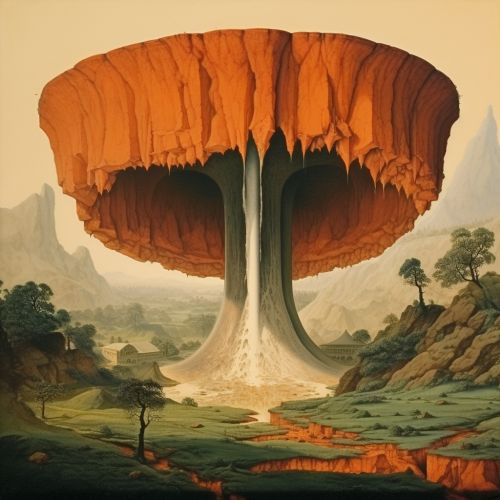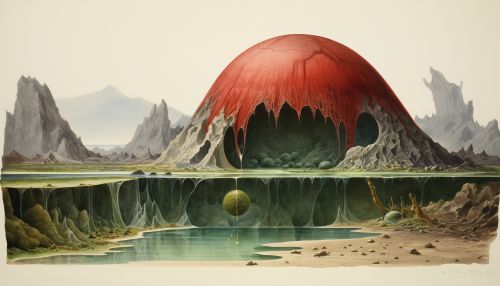The Dynamics of Magma Chamber Processes and Eruption Prediction
Introduction
Magma chamber processes are a fundamental aspect of volcanology and are crucial to understanding the dynamics of volcanic eruptions. These subterranean reservoirs of molten rock are the source of volcanic eruptions and play a key role in the formation of many geological features. The study of magma chambers involves a range of disciplines, including geology, geochemistry, and geophysics, and is essential for predicting volcanic eruptions.


Magma Chambers: An Overview
A magma chamber is a large pool of liquid rock located beneath the surface of the Earth. These chambers are formed when magma rises from the mantle due to buoyancy and pressure differences and collects in a reservoir within the crust. The size, depth, and characteristics of magma chambers can vary greatly, depending on factors such as the tectonic setting, the composition of the magma, and the geological history of the region.
Formation and Characteristics of Magma Chambers
The formation of a magma chamber begins with the partial melting of the mantle, a process driven by changes in pressure and temperature. This produces magma, a mixture of molten rock, dissolved gases, and crystals, which rises through the crust due to its lower density. As the magma ascends, it can collect in a reservoir within the crust, forming a magma chamber.
The characteristics of a magma chamber, including its size, depth, and the composition of its magma, are determined by a variety of factors. These include the tectonic setting, the type of mantle source, and the geological history of the region. For example, magma chambers associated with subduction zones, where one tectonic plate is forced beneath another, often contain magma that is rich in silica and water, leading to explosive eruptions.
Dynamics of Magma Chamber Processes
The dynamics of magma chamber processes are complex and involve a range of physical and chemical changes. These include the crystallization of magma, the mixing of different magmas, the exsolution of gases, and the movement of magma within the chamber.
Crystallization
As magma cools, it begins to crystallize, a process known as fractional crystallization. This results in the formation of a crystal mush at the edges of the chamber, with the remaining liquid magma becoming progressively enriched in elements that do not readily form crystals. This process can significantly alter the composition of the magma and influence the style of any subsequent eruption.
Magma Mixing
Magma chambers can contain multiple batches of magma, each with a different composition. These can mix together, a process known as magma mixing, which can trigger an eruption if it leads to an increase in pressure or a change in the physical properties of the magma.
Gas Exsolution
As magma rises and pressure decreases, gases dissolved in the magma can begin to exsolve, or come out of solution. This process, known as gas exsolution, can drive an eruption if it results in a rapid increase in pressure within the magma chamber.
Magma Movement
The movement of magma within a chamber, known as magma convection, can also influence the dynamics of magma chamber processes. This can lead to the mixing of different magmas, the redistribution of heat and crystals within the chamber, and changes in the pressure and composition of the magma.
Eruption Prediction
Predicting volcanic eruptions is a major goal of volcanology and relies heavily on understanding the dynamics of magma chamber processes. By monitoring changes in seismic activity, ground deformation, gas emissions, and other indicators, scientists can gain insights into the state of a magma chamber and the likelihood of an eruption.
However, predicting eruptions is challenging due to the complex and often poorly understood dynamics of magma chamber processes. Despite this, advances in monitoring techniques and computational models are improving our ability to forecast eruptions and mitigate their impacts.
Conclusion
Magma chamber processes are a critical aspect of volcanology and play a key role in shaping our planet's landscape. By studying these processes, scientists can gain insights into the dynamics of volcanic eruptions and improve our ability to predict and mitigate their impacts.
